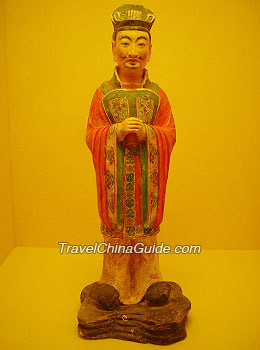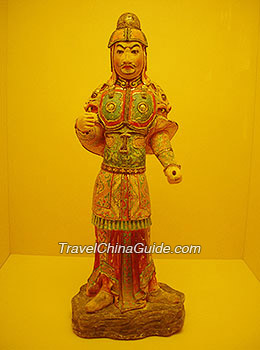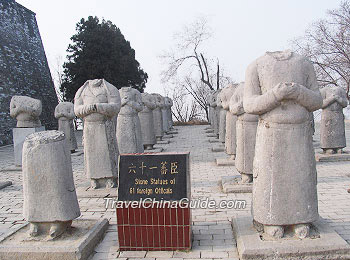The prosperity during the Tang Dynasty profited from its enlightened political system: comprehensive administration and official system, strict legal system, and equitable imperial examination system.
Administration System
The Tang Dynasty (618 - 907) initiated the organizational structure 'Dao' and 'Fu' to divide the political districts. During Zhen Guan's Reign, the national territory was divided into ten political districts called 'Dao', which increased to 15 in the Heyday of Kaiyuan. The subordinate political districts were called 'Zhou' or 'Fu'. The more subordinate administrative structure was in turn 'Xi'an' (town), 'Xiang' (five 'Li's), 'Li' (a hundred families), 'Cun' (village), 'Bao' (five families) and 'Lin' (four families). At the end of Kaiyuan reign, there were 328 'Zhou's and 1,573 'Xi'an's.
Official System
The official system involved the central official system and local official system. The central official system followed the Sui Dynasty's (581 - 618) Three Departments and Six Ministries system. In addition, nine 'Si's and five 'Jian's were set up to work with the six ministries. The local official system was in line with the political administrative structures, of which the chief official title were called 'Guancha Shi' (observer of Dao), 'Ci Shi' or 'Tai Shou' (chief officer of Zhou), 'Xi'an Ling', 'Qi Lao', 'Li Zheng', 'Cun Zheng', 'Bao Zhang' and 'Lin Zhang'.
 | Pottery Figure of
Civil Official, Tang Dynasty | |  | Pottery Figure of
Military Official, Tang Dynasty | |
Legal System
Compared with any other dynasties in Chinese history, the Tang Dynasty had the most comprehensive and the most detailed legal system. Generally, the legal system included four basic forms, namely, 'Lu' (criminal law), 'Ling' (institutional regulations), 'Ge' (administrative rules) and 'Shi' (formulas of official documents). The
Tang Lushu Yi, compiled in the reign of Emperor Gaozong was a representative code of feudal laws, which contained criminal law, law of safeguard and defense, law for imperial officers, law of marriage and census registers. The regulations were fairly complete and the legal provisions were rather concise. Especially, in the early period of Zhen Guan's Reign,
Emperor Taizong focused much attention on listening to wise advice while enforcing the law. In this way, a peaceful social order was established, setting up a good example for later dynasties and even for some other imperial states in Asia.
Imperial Examination System
Displacing the old method of selecting talented people, the imperial examination system was a fairly equitable testing system to select officers for the feudal court.
 |
Stone Statues of 61 Foreign Officials,
Qianling Mausoleum, Tang Dynasty |
There were usually four subjects existing in different times, including 'Jinshi', 'Mingjing', 'Mingfa' and 'Mingyu'. The examination of the highest-grade was called 'Sheng Shi' (the national exam) which was held annually by the Shangshu Sheng in the capital city Chang'an (currently Xi'an). Those who were selected to attend Sheng Shi were called 'Ju Ren'. Examinees that passed the 'Sheng Shi' were called 'Ji Di'. Especially, the one who got the first place in the exam was entitled as 'Zhuang Yuan'. All the 'Ji Di's were qualified enough to be further judged by Li Bu who decided if they could be given an official title.
Generally, the Imperial Examination System was a progressive examination which allowed intellectuals born in poor families to have the opportunity to become an officer in the court. Speaking from the imperial part, this examination system helped to enhance the centralization of imperial power and to promote the unification of thought.
- Last updated on Apr. 21, 2021 -


